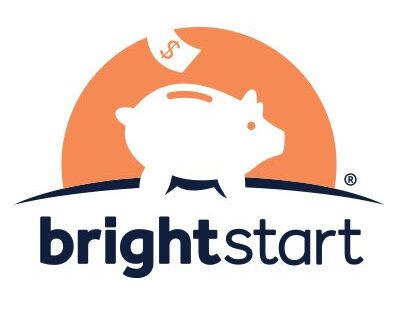Best 529 Plans of 2025
529 Plans by State
Review and compare state 529 savings plans below.
Summary: Best 529 College Savings Plan
Tips for Comparing 529 Plans
In 2023, only 30% of families used savings funds, such as 529 plans, to pay for school, according to a report from Sallie Mae. If you’re interested in saving up to offset future college costs, below are tips for comparing plans:
- Review costs. 529 plans may have administrative fees or other investment costs, which can reduce your investment earnings. While some fees are inevitable, understanding how they add up will help you compare options.
- Look into tax benefits. Some state plans offer tax breaks for state residents. Figure out how much you could save based on your expected contributions, income and filing status. Then, compare that savings to the costs, features and investment options out-of-state plans offer to see which option is the better deal.
- Understand plan types. Two types of 529 plans exist. Direct-sold plans are sold directly by states, and you manage the savings in your own account. Advisor-sold plans are sold by investment firms and advisors manage the underlying investments for you, which generally results in higher fees. Review costs and features of both plan types to figure out which is best for you.
- Review online platforms. Some 529 plans provide useful consumer-friendly features that might be important to you, like an online platform where friends and family can make a contribution to your child’s plan. Look into the perks and extras available from in-state plans and other plans to see which best fits your needs.
What Is a 529 Plan?
A 529 plan is a tax-advantaged savings account that’s designed to help you save for education costs. Also known as qualified tuition plans, 529 plans are offered by every state and Washington, D.C., as well as some educational institutions. While you’re not restricted to using the 529 plan offered by your state of residence, there may be benefits to choosing it, such as state tax deductions or credits.
As long as you use your savings on qualified education expenses, you won’t have to pay income tax on your earnings. You can spend 529 plan savings on college expenses, as well as K-12 tuition, certain apprenticeship costs, and student loan repayment up to $10,000 per beneficiary and each sibling.
How Does a 529 Plan Work?
How a 529 plan works depends on the type of plan—specifically, whether it’s a college savings plan or a prepaid tuition plan.
- College savings plan. This plan works similarly to a Roth IRA or Roth 401(k) that you use to save for retirement. You invest after-tax dollars into a variety of options, such as mutual funds and exchange-traded funds. The value of your investment will increase or decrease based on the performance of your investments. You can typically use the savings on tuition, fees, and room and board at any college or university.
- Prepaid tuition plan. This plan lets you lock in today’s tuition rates to use at a future date. Since tuition costs typically increase year after year, these prepaid plans offer a way to save in the future. However, they’re more restrictive than a college savings plan, since you’re supposed to use the savings on tuition at specific in-state public colleges. You also cannot prepay for tuition for elementary and secondary schools with this plan.
Benefits of a 529 Plan
There are a number of benefits to using a 529 plan to save for your child’s education.
- Tax-free distributions. When withdrawing your 529 plan savings for qualified education expenses, you won’t have to pay taxes on the amount.
- Tax benefits. Many states offer tax deductions or credits if you contribute to a 529 plan.
- High contribution limits. Depending on which plan you choose and what state you live in, you may be able to contribute as much as $235,000 to $553,098 to your 529 plan.
- Control your account. As the account owner, you’ll retain control over your account until you withdraw the money.
How To Open a 529 Plan
Opening a 529 plan is easy. Most have low (or no) minimum contributions or income restrictions and simply require that you have a U.S. mailing address and Social Security number or tax ID. Here are the steps you’ll need to take to open your account:
- Determine the 529 plan you want to open. Decide whether you want a college savings plan or a prepaid tuition plan.
- Compare your options. You’re not limited to your state’s plan, though it may come with tax perks for residents. Compare the costs and quality of various plans to pick the one that’s right for you. You also have the option of opening multiple 529 plans in different states.
- Choose a beneficiary. If you’re saving for your child’s future education, you’ll enter their name, date of birth and any other details the plan requires.
- Fund the account. You can open a 529 account online and fund it directly from your bank account. Make sure to read over your account agreement for any fees and other fine print details.
- Choose your investments. Finally, you can build your portfolio by selecting investments. The most hands-off way to do this is to choose age-based or target-date portfolios, which will adjust your investments based on the beneficiary’s age.
Alternatives to 529 Plans
529 plans are just one type of savings vehicle families can use for college. Below are five other ways you can save money for education costs:
1. Roth IRA
A Roth IRA is a tax-advantaged account designed to help families save for retirement. You can also use money from a Roth IRA to pay for college without incurring a 10% “early” withdrawal tax penalty.
The downsides to using Roth IRA funds for school are that earnings are still subject to income tax upon withdrawal, and parents who dip into their retirement nest egg for a child’s education could find themselves short on cash during their golden years.
2. Coverdell Education Savings Account (ESA)
Coverdell ESAs are tax-advantaged savings accounts similar to 529 plan savings accounts. Investment earnings in Coverdell ESAs aren’t taxable as long as you withdraw money for qualified school expenses. The annual maximum contribution is $2,000 per beneficiary, depending on your income.
3. Brokerage Accounts
A taxable brokerage account is an investment account that doesn’t come with the same tax perks as education savings accounts—but there are fewer restrictions.
Brokerage accounts have no contribution limits, and you have the flexibility to personalize your portfolio with individual stocks, exchange-traded funds (ETFs) and more. Account earnings are taxable, but you can withdraw money for any reason without tax penalties.
4. Uniform Gifts to Minors Act (UGMA) or Uniform Transfer to Minor Act (UTMA) Accounts
UGMA and UTMA accounts are types of accounts an adult custodian can open to save money for a minor. Once the minor reaches a certain age (often 18 to 21 years old depending on the state), they take control of funds and assets.
UGMA or UTMA account savings can be used for school or any other purpose. However, be aware that money in a UGMA or UTMA account can affect a student’s financial aid eligibility.
5. High-Yield Savings Accounts
High-yield savings accounts are interest-bearing accounts that earn a higher-than-average annual percentage yield (APY). High-yield savings accounts might not earn as high a return as other investments over an extended period.
However, funds in savings accounts are guaranteed and backed by deposit insurance (at least $250,000 per FDIC-insured bank), making them ideal for shorter-term savings you might need within a year or two. You can also use funds in high-yield savings accounts for any expense and not just college costs.
Methodology
The best 529 plans listed here received five-star ratings for both in-state and out-of-state residents on Savingforcollege.com. The rating system on Savingforcollege.com takes into account each plan’s investment performance history, fees, extra features and reliability.
While you don’t have to choose your state’s plan, more than 30 states provide a tax break on contributions (usually—though not always—for residents only). Nearly all of our top-rated plans provide state tax benefits to residents, but they also offer enough features and cost savings to appeal to non-residents who don’t qualify.
To learn more about how Forbes Advisor rates lenders, and our editorial process, check out our Loans Rating & Review Methodology.
Frequently Asked Questions (FAQs)
Why should I consider saving for college in a 529 plan?
The biggest reasons to consider a 529 plan are the structured savings and the tax benefits. Merely having a specific college savings vehicle could encourage you to save more than you would have otherwise. And choosing a 529 plan rather than a traditional savings account gives you the benefit of tax-free growth on investments and a potential state tax break.
What are the drawbacks of 529 plans?
Some consumers may be concerned about the possibility that investing for college could lead to losses on your contributions, rather than earnings. But it’s best to start saving in a 529 plan early, when your child is as young as possible. That gives your money more time to grow. Additionally, plans typically offer age-based investment portfolios, which help balance your investments based on how close your child is to college, potentially lowering your risk.
What happens to money saved if my child doesn’t use it for college?
Money in 529 plans must be used to pay for qualified education expenses, which gives you less flexibility than if you’d saved in a brokerage account or savings account. You can always take the money out to pay for expenses other than education, but you’ll pay federal income tax and a 10% penalty to do so.
You have other options, however, if your child doesn’t go to college or gets a scholarship that covers their expenses. For example:
• Your child can use the money for a registered apprenticeship program instead
• You can transfer the money to another beneficiary who is a qualifying family member—including yourself—to use for education expenses
• In the event your child receives a full scholarship, you can withdraw money from the account for non-education expenses and pay only federal income tax (not the 10% penalty)
• Up to $10,000 in 529 plans can be used to pay off existing student loans, so you may transfer the money to a beneficiary who can use the money to pay off debt. Money in the account also can be used to repay beneficiaries’ siblings’ student loan debt, up to ,000 per sibling
• Up to $10,000 in 529 plans can also be used to pay tuition at K-12 schools
Can you lose money in a 529 plan?
It’s possible to lose money in a 529 college savings plan. When you contribute funds to a 529 plan, you’re investing in vehicles like mutual funds, stocks and bonds. These assets can go up or down in value, and your savings will increase or decrease along with them. Opting for a diversified portfolio can help reduce your risk of losing money in a 529 plan.
What is the contribution limit for a 529 plan?
The contribution limits for a 529 plan vary by state, but they range from $235,000 to $553,098.
How much should I put in a 529 plan?
How much you should save depends on your child’s college aspirations. Financial institutions like Schwab and Fidelity have savings calculators you can use to estimate how much you might need based on where your child might go to school.
Can 529 plans be used for purposes other than college?
You can use 529 plan funds for purposes other than college. For instance, you can use 529 plan savings of up to $10,000 per year on K-12 tuition and registered apprenticeship programs without penalty.
You can also use up to $10,000 to repay the beneficiary’s qualified student loans and up to $10,000 to repay student loans of each of the beneficiary’s siblings. This $10,000 per beneficiary and sibling is a lifetime limit, not an annual one.















